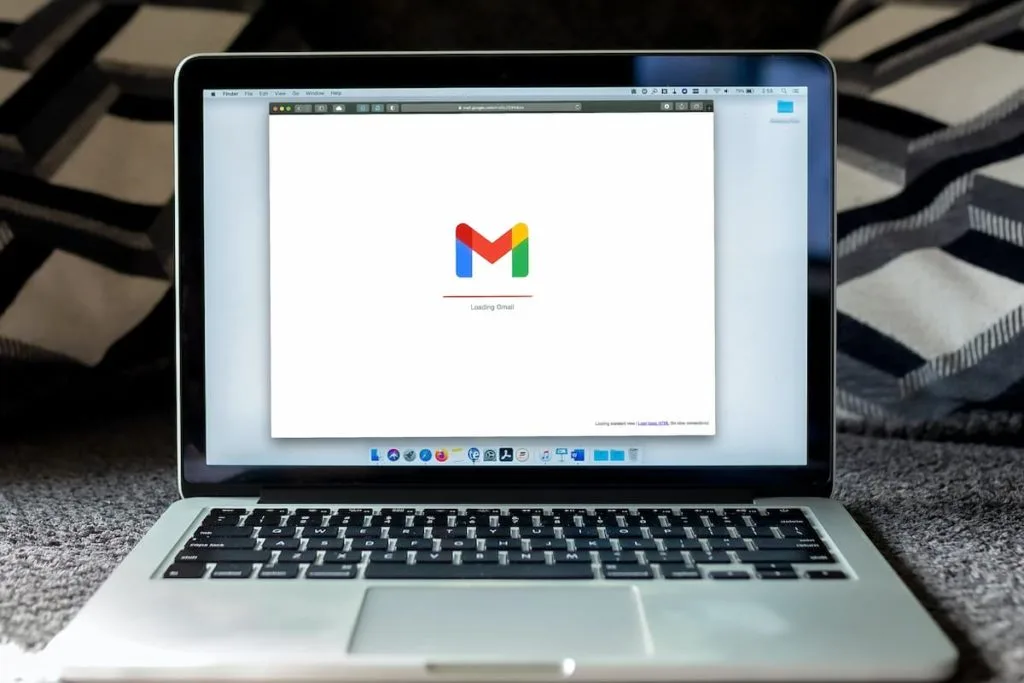Harnessing the Power of Micro-Influencers in Niche Markets

In the ever-evolving landscape of digital marketing, the power of influencer marketing has become increasingly undeniable. Once dominated by celebrities and macro-influencers, the spotlight is now shifting towards a more authentic and approachable group of influencers – the micro-influencers. These individuals, though they may have smaller followings, wield a level of authenticity and engagement that is reshaping how brands connect with their audiences, especially in niche markets.
But why are micro-influencers becoming so crucial in today's marketing strategies, particularly for businesses targeting specific niches? Unlike their higher-profile counterparts, micro-influencers often boast a dedicated and highly engaged audience, making their endorsements more personal, trustworthy, and relevant. This blog post delves into the unique advantages that micro-influencers bring to the table, and how businesses can harness their power to create impactful marketing campaigns that resonate deeply within niche markets.
As we navigate through the intricacies of micro-influencer partnerships, we will uncover how these collaborations can lead to more authentic connections, enhanced brand loyalty, and ultimately, a stronger presence in your specific market sector. Whether you're a seasoned marketer or just starting out, understanding the potential of micro-influencers is a crucial step in elevating your digital marketing strategy.
Understanding Micro-Influencers
What are Micro-Influencers?
Micro-influencers are a breed of social media personalities who, despite having a smaller follower base—typically between 1,000 and 100,000—boast a significant impact within their niches. These individuals carve out a space in specific areas, be it fashion, technology, food, or fitness, offering content that deeply resonates with a targeted and engaged audience.
Characteristics of Micro-Influencers
The allure of micro-influencers lies in their distinct characteristics:
Authenticity: Their content is often more personal and relatable. This authenticity fosters a genuine connection with their audience, making their endorsements more impactful.
Engagement: With a smaller audience, micro-influencers tend to engage more deeply with their followers. This high engagement rate is a goldmine for businesses seeking meaningful interactions with potential customers.
Niche Authority: Many micro-influencers are viewed as trusted experts or thought leaders in their specific fields, lending credibility to their recommendations.
Micro vs Macro: Understanding the Difference
While macro-influencers and celebrities cast a wider net in terms of reach, micro-influencers offer depth. In the realm of niche marketing, the focused and highly engaged audience of a micro-influencer can be far more valuable than the broad but less engaged following of a macro-influencer. The key differences lie in audience trust, engagement rates, and the authenticity of the connection - factors where micro-influencers often excel.
The Importance of Authenticity and Engagement
In the world of influencer marketing, authenticity and engagement aren't just buzzwords—they're the cornerstone of successful campaigns. These elements forge stronger, more trusting relationships between the influencer, their audience, and the brands they endorse. Statistics show that campaigns leveraging authentic voices and high engagement often see better ROI, making a strong case for incorporating micro-influencers into your marketing strategy.
The Benefits of Micro-Influencers for Niche Markets
High Engagement Rates and Targeted Audience
One of the standout benefits of partnering with micro-influencers is their ability to boast significantly higher engagement rates compared to their macro counterparts. This heightened engagement is due to their more intimate audience size, fostering a space for meaningful and more frequent interactions. For niche markets, this aspect is invaluable. Micro-influencers often cater to a well-defined audience, ensuring that your message reaches the right ears, eyes, and hearts.
Cost-Effectiveness and ROI
In the realm of marketing budgets, micro-influencers are a cost-effective option. Their fees are generally lower than those of larger influencers, but that doesn't mean they deliver less value. In fact, the ROI on micro-influencer campaigns can be remarkably high, especially when the influencer’s niche aligns perfectly with your brand. This alignment ensures that every penny spent is reaching a highly relevant audience.
Enhanced Credibility and Trust with Audiences
The authenticity and relatability of micro-influencers are powerful tools in building trust and credibility among potential customers. They are seen as peers by their followers, and their endorsements are often taken as genuine recommendations rather than paid promotions. This peer-level influence is the digital equivalent of word-of-mouth marketing, long known as one of the most effective forms of advertising.
Identifying the Right Micro-Influencers for Your Brand
Finding Your Perfect Match
The first step in harnessing the power of micro-influencers is identifying those whose audience and niche align seamlessly with your brand. The right influencer can bridge the gap between your products and their engaged followers, making this match crucial for the campaign's authenticity and success.
Using Social Media and Influencer Platforms for Research
Social media platforms are excellent starting points for uncovering potential micro-influencers. Tools like Instagram's search and hashtag features allow you to delve into specific niches and discover influencers who are actively engaging with your target audience. Beyond social media, dedicated influencer platforms offer a more streamlined approach, with advanced search functionalities to filter influencers by niche, audience demographics, and more.
Evaluating Potential Micro-Influencers
When assessing potential micro-influencers, consider the following key factors:
Engagement Rate: Engagement is more telling than follower count. Look at how the influencer's audience interacts with their content through likes, comments, and shares.
Audience Demographics: Ensure their followers align with your target market in aspects such as age, location, and interests.
Content Quality: The influencer's content should resonate with your brand's message and values. Quality and relevance are paramount.
Authenticity: An authentic influencer fosters trust and loyalty, making their endorsements more effective and credible.
Reaching Out to Micro-Influencers
When reaching out to a potential micro-influencer, personalisation is key. Your message should reflect genuine interest in their content and audience. This initial communication sets the tone for future collaboration, so make it count.
Collaboration Considerations
Clear communication of your campaign goals and expectations is essential. While providing necessary guidelines, it's equally important to respect the influencer's creative freedom. This balance ensures that the resulting content is both authentic to their style and aligned with your brand objectives.
Building Relationships with Micro-Influencers
Approaching Micro-Influencers the Right Way
The journey to a successful micro-influencer partnership starts with the initial outreach. It's imperative to approach them in a manner that's both respectful and professional. Craft your outreach messages to be personal and appreciative of their work. Clearly articulate how a collaboration could benefit both their goals and yours. This first impression can set the tone for the entire relationship.
Negotiating Collaboration Terms
Once a micro-influencer shows interest, the next step is negotiating the terms of the collaboration. This conversation should be transparent and considerate of both parties' needs. Discuss aspects such as compensation, whether monetary or in-kind, the specifics of the content to be created, timelines, and any particular requirements of your campaign. It's vital that both you and the influencer have a clear understanding of the expectations and deliverables.
Fostering Long-term Partnerships
Building a long-term relationship with a micro-influencer can be more beneficial than a one-off campaign. Consistent collaboration leads to sustained brand advocacy and helps in cultivating deeper trust with the audience. To maintain a fruitful relationship, engage in regular communication, provide constructive feedback, and acknowledge their efforts. Remember, a successful partnership is rooted in mutual respect and shared values.
Legal and Ethical Considerations
Navigating the legalities is an essential part of influencer collaborations. Ensure all agreements are put into contracts, and that both parties understand and adhere to advertising standards, such as the necessary disclosures for paid partnerships. Moreover, uphold ethical practices throughout the partnership. This includes respecting the influencer's personal brand and ensuring that all collaborative content aligns with the values of both the influencer and your brand.
Crafting an Effective Micro-Influencer Campaign
Setting Clear Objectives and KPIs
The foundation of a successful micro-influencer campaign lies in setting clear and measurable objectives. Begin by defining what you want to achieve - be it brand awareness, lead generation, or sales. Establish Key Performance Indicators (KPIs) that align with these objectives, such as engagement rate, click-through rate, or conversion rate. This clarity will guide the campaign's direction and provide a benchmark for success.
Collaborating on Content Creation
Collaborating with micro-influencers on content creation is a delicate balance. While you have a brand message to convey, it's crucial to allow influencers the creative freedom to present this message in a way that resonates with their audience. Discuss content ideas and guidelines but be open to their input and style. Authentic and relatable content often comes from a collaborative process that respects both the brand’s needs and the influencer’s voice.
Adhering to Legal Guidelines and FTC Regulations
Navigating the legal landscape is crucial in influencer marketing. Ensure compliance with all relevant laws and regulations, including the Federal Trade Commission (FTC) guidelines on endorsements and testimonials. Make it a point to have a clear understanding with influencers about the necessity of disclosing the sponsored nature of the content in a transparent manner.
Measuring and Analyzing Campaign Performance
As your campaign rolls out, actively measure its performance against the set KPIs. Use tools and analytics to track metrics like engagement, reach, and conversions. This data is invaluable for analyzing the campaign’s effectiveness and provides insights for future campaigns. Be open to adjusting strategies based on this performance data to maximize the campaign’s impact.
Measuring the Success of Your Campaign
The Importance of Tracking Performance
A critical component of any micro-influencer campaign is the ability to measure its success accurately. This not only demonstrates the return on your investment but also provides valuable insights for future campaigns. Start by revisiting the KPIs you set at the campaign's inception—these will be your guideposts for evaluation.
Using the Right Tools for Measurement
Leverage the power of analytics tools to track the performance of your campaign. Many social media platforms offer in-built analytics features that provide data on reach, engagement, and other relevant metrics. Additionally, consider using third-party tools for more in-depth analysis, especially if your campaign spans multiple platforms.
Analyzing Data and Deriving Insights
Data analysis goes beyond just looking at numbers. It's about understanding what these metrics mean for your brand. For instance, high engagement rates might indicate strong audience interest, while click-through rates can measure the effectiveness of call-to-actions. Analyze this data in the context of your objectives to gauge the true impact of the campaign.
Adjusting Strategies Based on Performance
One of the key benefits of digital marketing is the ability to pivot quickly based on performance data. If certain aspects of your campaign are not performing as expected, don’t hesitate to tweak your approach. This could mean changing the content style, trying different influencers, or even revising your target audience. The agility to adapt is a significant advantage in the dynamic landscape of digital marketing.
Unleashing the Potential of Micro-Influencers in Niche Markets
As we've explored in this blog post, micro-influencers represent a powerful asset in the realm of digital marketing, particularly for businesses targeting niche markets. Their authenticity, high engagement rates, and authority within specific areas make them invaluable partners for brands looking to make a meaningful impact.
The journey of working with micro-influencers, from identifying the right partners to crafting effective campaigns and measuring their success, is one of strategic planning, creative collaboration, and continuous learning. By understanding and leveraging the unique strengths of micro-influencers, brands can create more authentic, relatable, and effective marketing campaigns.
Remember, the key to successful micro-influencer collaborations lies in building genuine relationships, respecting their creative freedom, and staying true to your brand values. As the digital landscape continues to evolve, the adaptability and personal touch that micro-influencers bring to the table will remain an invaluable resource for brands looking to connect with their audience on a deeper level.
So, whether you're a seasoned marketer or just starting out, consider incorporating micro-influencers into your marketing strategy. The potential for authentic engagement and targeted impact in your niche market is immense, waiting to be tapped into.

Similar Posts

Choosing Between a Marketing Agency, a Digital Marketing Freelancer and an In House Marketer

Mastering Email Marketing: Top Optimization Tricks for Maximum Impact

The Evolution of B2B Digital Marketing: A Journey Through Time

2021 Google Algorithm Updates In Review
